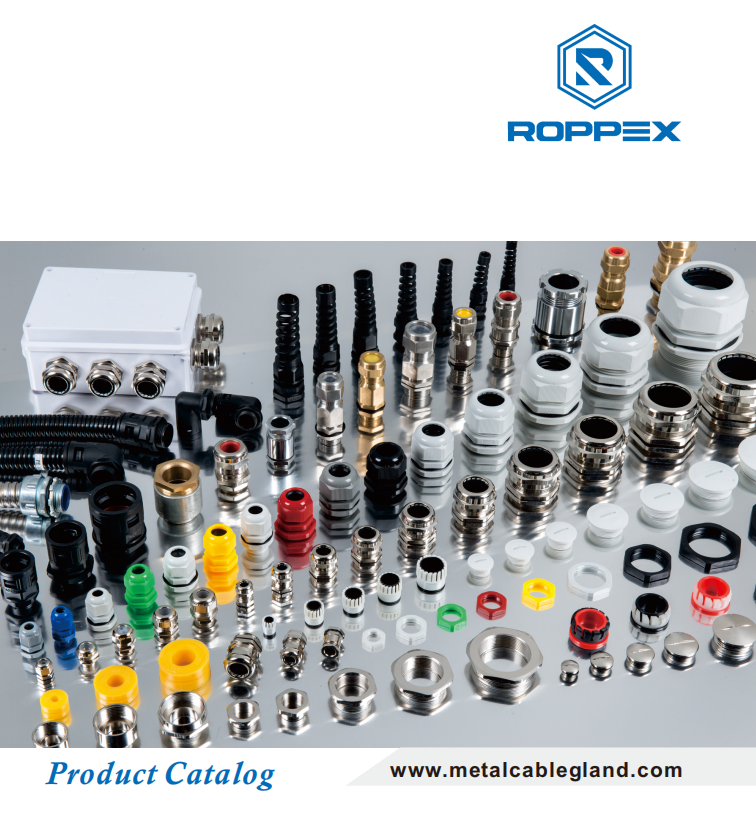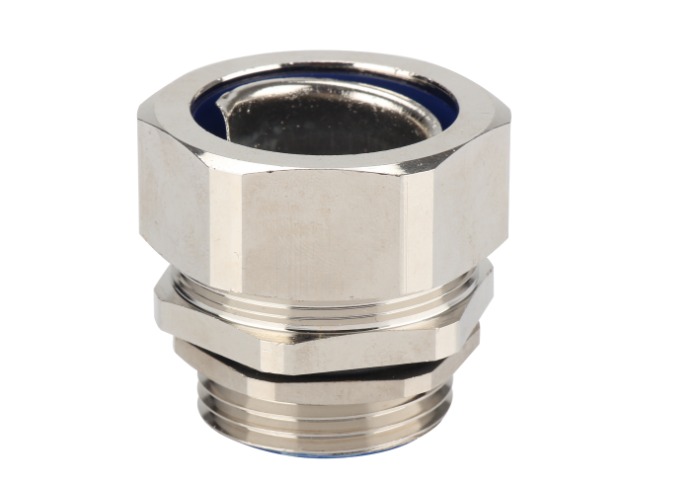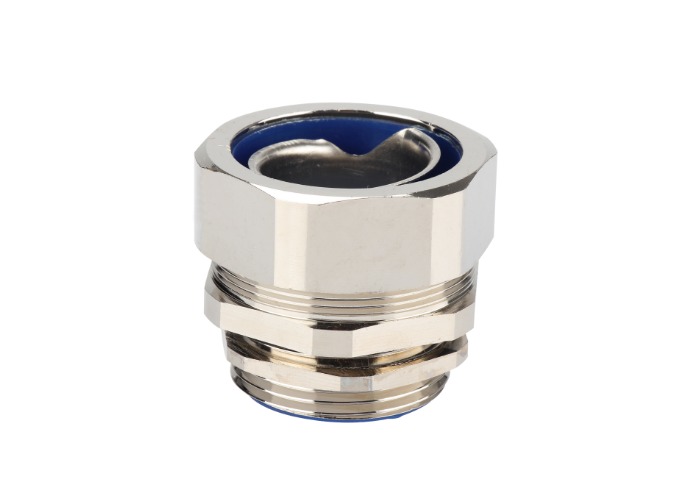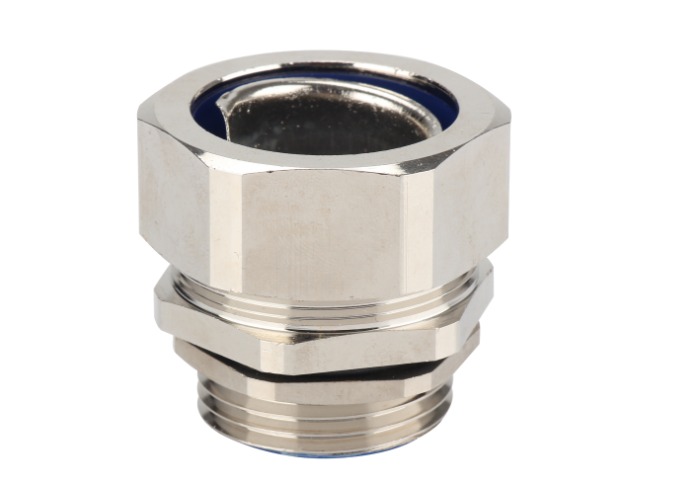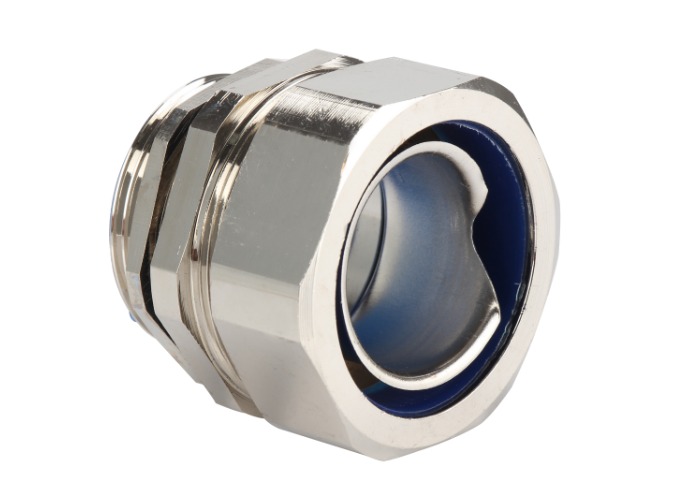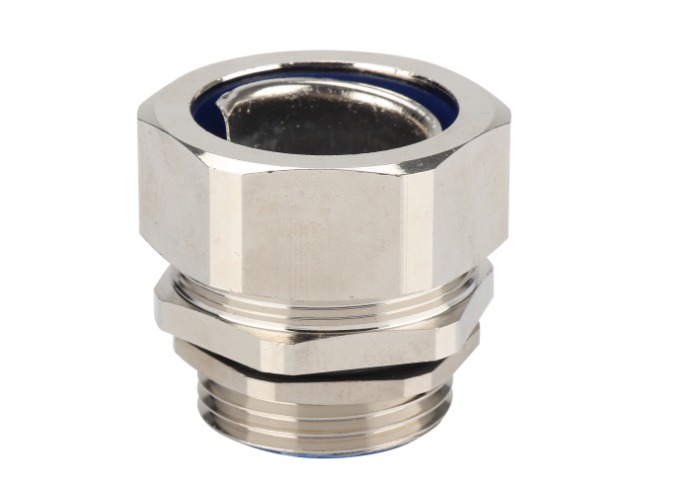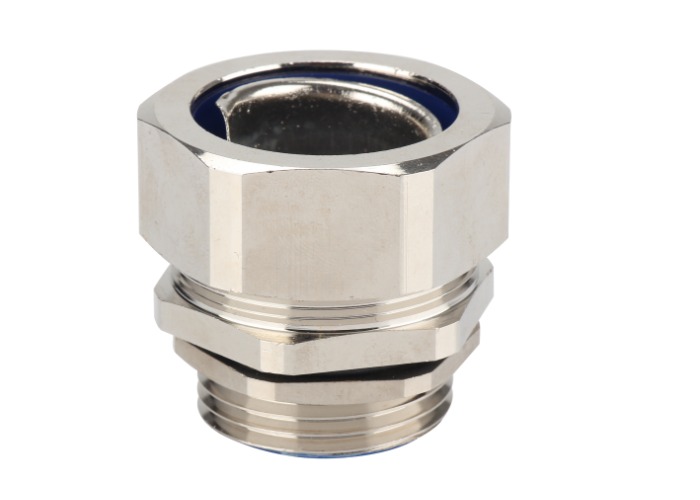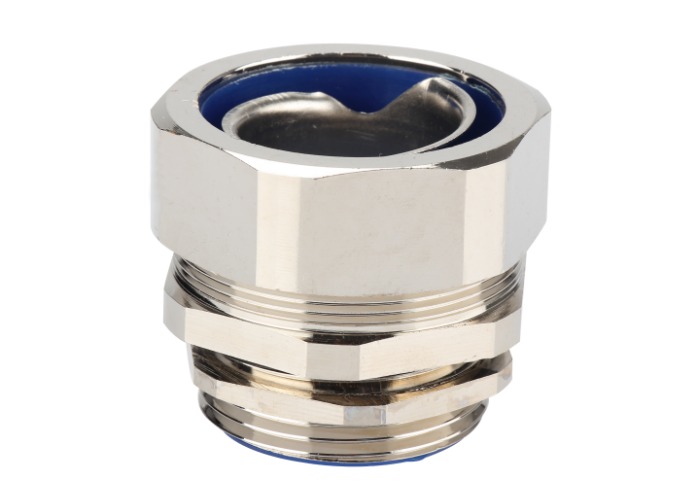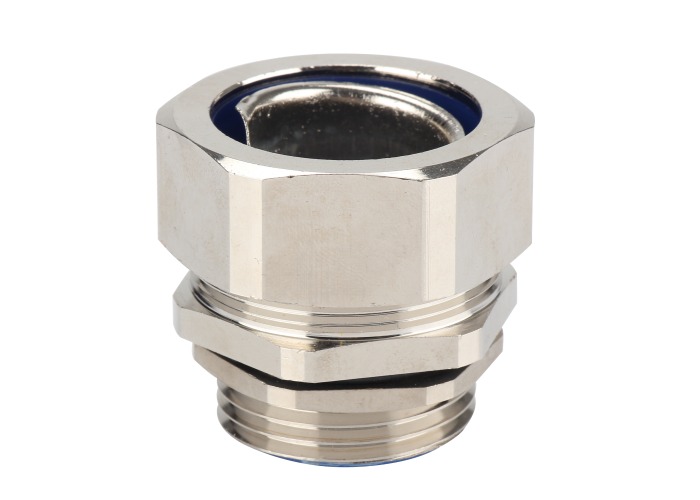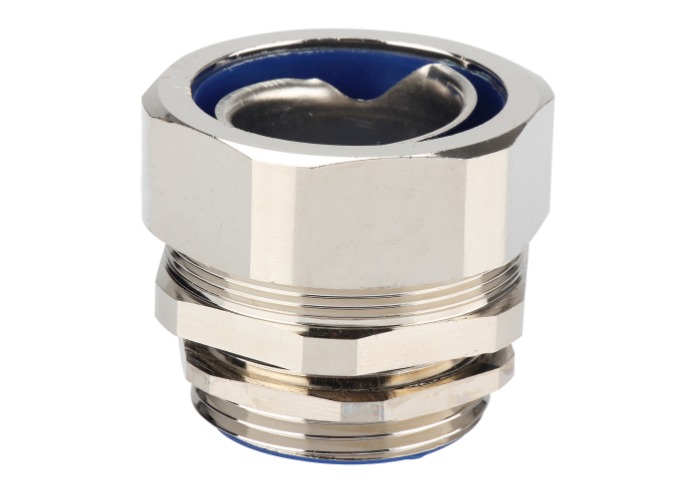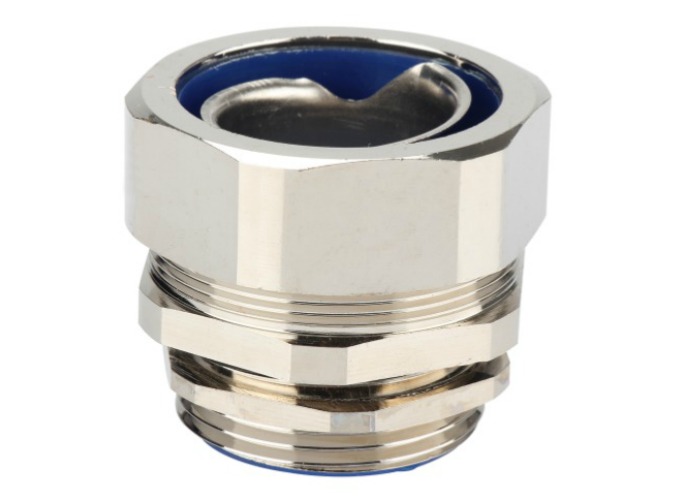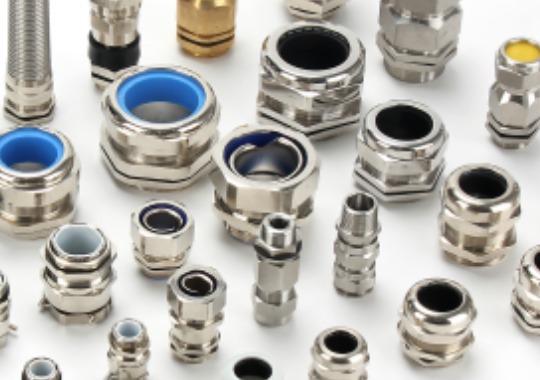Liquid Tight Connector
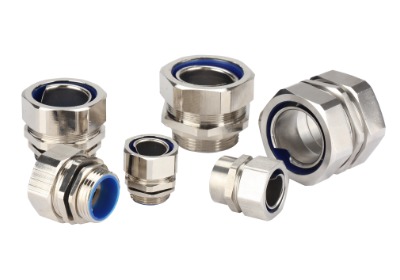
The liquid-tight connector also named liquid tight conduit fittings (or seal tight connector), it was usually installed with the flexible conduit as the seal tight fittings to ensure the waterproof degree.
The liquid-tight connectors are normally made of metal material such as stainless steel, aluminum, PVC and brass, all of these liquid tight connectors could be designed in various sizes such as 1 inch, 2-1/2 inch, 3 inches, etc., we could make any sizes liquid tight connectors as customers’ requirements.
The liquid-tight connector has many types of shapes such as the straight liquid tight connector, 90-degree liquid tight connector, and 45-degree conduit fitting. The liquid-tight connector designed to connect flexible metallic liquid tight conduit ensuring IP67 or IP68 waterproof degree protection for the junction box, equipment, and other electrical enclosures.
Our liquid-tight connectors adopt our patented, split gland ring that assures the liquid-tight seal function, all the metallic components have strong corrosion resistant function in the wet environment.
CEO Notes
Hey, Thanks for visiting our website, and I hope to be a friend with you here. We are a professional manufacturer for cable glands and liquid-tight connectors in China for more than 15 years. Providing our customers with excellent quality is our final aim, please contact us for quotation freely! Thanks!
Questions You May Ask About Our Liquid Tight Connectors
Our liquid tight connector could reach IP67 & IP68 waterproof degree as customer’s need, we have different types for your choice.
As a professional manufacturing company, we could provides you with all different sizes of liquid tight connector you could find in the market, normally ranging for 3/8″ to 6″.
In China’s custom rule, we normally announce the HS code for the liquid-tight connectors to be 8307900000.
Our liquid tight connector could be made of any metallic materials, such as stainless steel, nickel-plated brass, and zinc.
Liquid Tight Connector: Ultimate Guide for Buyers
Are you looking for some information about the liquid tight connector?
Perhaps you are searching about what liquid tight connector is?
Are you are aware of their different types and sizes?
What about their parts and installation?
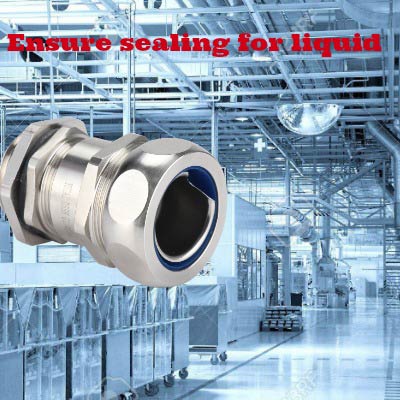
You are in the right place.
In can be very hard finding the ideal tools and parts for your particular equipment.
The consideration not just lies in the cost of those items.
It also lies in its features and specifications.
When we talk about getting the right liquid tight connector, how do you know you are getting the best part?
In this e-book, we will present you with the necessary information you need about the liquid tight connector.
Without further do, let’s begin!
Chapter 1: Liquid Tight Connector Definition: What is Liquid Tight Connector?
In case you didn’t know yet, liquid tight connectors connect liquid tight conduit to:
- Enclosures
- Boxes
- Fixtures
They are created to endure corrosive and wet environments.
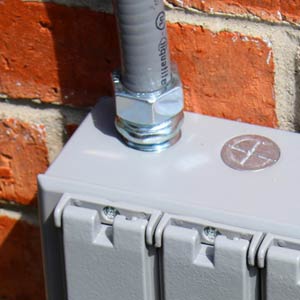
Liquid tight connector installed in enclosure
They provide safe electrical service in environments that are exposed to:
- dirt
- oil
- water
- weather and;
- other contaminants
These are available in different materials including:
- non-metallic
- zinc
- steel and;
- aluminum
They are also available in a wide variety of choices including:
- 90 degrees angle fittings with or without insulated throats
- 45 degrees angle fittings with or without insulated throats
- external ground lugs
- stainless steel wire mesh strain relief
Typical applications for liquid tight fittings include:
- billboards
- illuminated storefront signs
- air conditioning units
- robotics
- food processing equipment
- transformers
- motors
- wiring of the machine tools
These super sealtite conduit fittings safeguard conductors from any mechanical damage due to:
- movement
- vibration
- seal out cutting oils, dust, water, and coolants
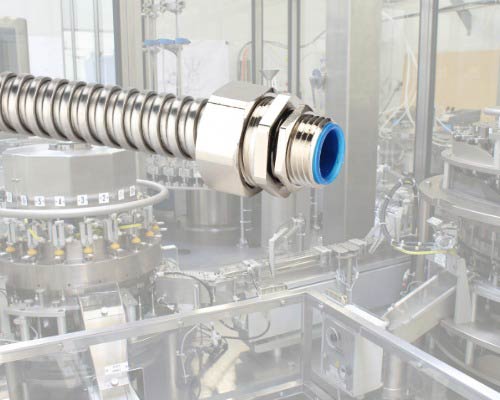
Liquid tight connector with metal flexible conduit
Applications like these could be seen, but aren’t limited to industries like:
- petrochemical and chemical plants
- petroleum refineries
- paper and pulp mills
- dairies
- food processing plants
- breweries
- aerospace industries
- automobile manufacturing facilities
- paint manufacturing facilities
- waste treatment facilities
- electric power generating plants
- machine tool manufacturers
Features of a Liquid Tight Connector
Some of the amazing things about the liquid tight connectors on metallic is that they are suitable for all wet locations.
They are also oil tight, rain tight, and liquid tight.
They have a very long life in corrosive, dusty, and wet settings.
Hex-shaped gland nut enables for simple wrenching.
That offers a quick and tight installation.
What’s more:
They are also reusable.
Long ferrule stops pullout and tight bend conduit pop out.
They are also the third party certified.
These are available in different sizes that range from 3/8 inches to 6 inches.
Ultimately, they are accessible in non-insulated and insulated versions to meet any client preferences.
How Does Liquid Tight Connector Work?
A stainless steel liquid tight connectors is a special electrical connector in cabling for electronic and computer systems where contaminant and water intrusion is an issue.
Its jacket is made of synthetic, plastic or rubber material, which is impervious to dust and moisture.
The jacket also offers enhanced electrical integrity and mechanical strength.
That’s true particularly in connections subject to recurrent variable and flexing temperature.
If appropriately used, liquid tight flexible metal conduit fittings can lower downtime.
It can also simplify reliability and lower the risk of an intermittent connection failure in complication systems.
For instance, blade servers, which include different cable connections, in a constrained by physical volume.
These tools could help in equipment, which is operated outdoors.
What’s more:
Liquid tight flexible conduit fittings are cheap and could last for many years.
Chapter 2: Liquid Tight Connector Types and Sizes
Did you know that there are different types of liquid tight connector?
Yes, you read that right.
Each of them has its materials too.
In this section, we will uncover the different types of liquid tight connectors and their sizes:
- Straight liquid tight connectors
- 90 degrees liquid tight connectors
- 45 degrees liquid tight connectors
- Non-metallic liquid tight connectors
- Metallic liquid tight connectors
- Swivel liquid tight connectors
Straight Liquid Tight Connectors
A straight liquid tight connector can attach liquid tight conduit to enclosures, boxes, and fixtures.
These type of fittings are created to withstand any corrosive and wet environments.
2 liquid tight connector are available in different sizes ranging from 1 inch to 2 ½ inches.
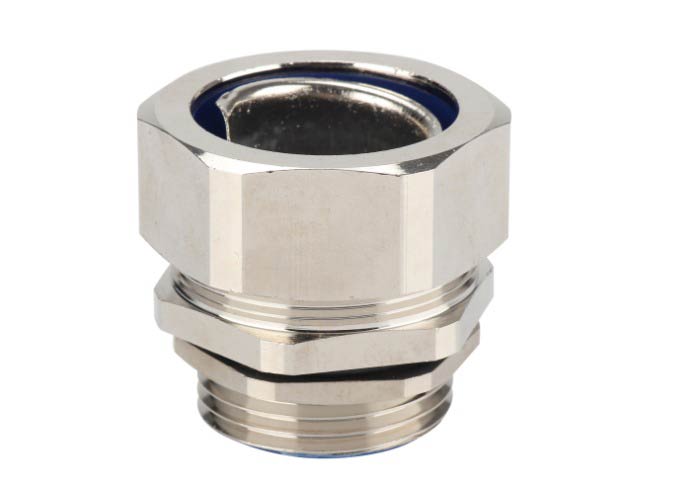
Straight liquid tight connector
Straight liquid tight connectors along guarantees an enduring liquid tight connector for liquid tight conduit.
Seal tight conduit fittings could serve to terminate an external bonding conductor, which runs parallel to the conduit.
Following are some of the materials used for a straight liquid tight connector
Copper-Free Aluminum
These seal tight flex connectors utilize for tough and industrial corrosive applications where aluminum is preferred.
Zinc
These 3 liquid tight connectors provide corrosion resistance from the elements
Malleable / Steel Iron
These connectors are utilized in tough, industrial and corrosive purposes.
Steel
This liquid tight flex connector boasts a tough, insulated lining to endure strain and vibration.
Nylon
These are made of a non-metallic, lightweight and non-conductive material that offers corrosion resistance.
Nickel-Plated Brass Fitting
These liquid tight straight connectors are resistant to fuels, lightweight oils, and water.
90 Degrees Liquid Tight Connector
These 90 degrees liquid tight connector can connect liquid tight conduit to:
- enclosures
- fixtures and;
- boxes
These are made to endure corrosive and wet environments.
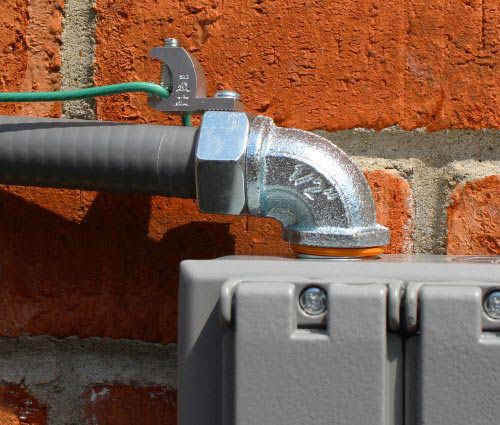
90 degree liquid tight connector
90 degrees angle models are accessible along with a protective insulated throat for conduit sizes from 3/8 inches to 2 inches.
Liquid tight straight connectors eat out:
- dust
- oil
- water and;
- other damaging particles
Following are some of the materials utilized for 90 degrees liquid tight flex conduit:
Zinc
These liquid tight to emt connector provide corrosion resistance from other types of elements.
Thermoplastic
These connectors are resistant to corrosion and abrasion in outdoor environments.
Malleable / Steel Iron
These flexible metal conduit fittings can be used for corrosive, industrial and tough applications.
Steel
This material boasts insulated, tough lining to endure strain and vibration.
304 Stainless Steel
These connectors are used in corrosive, industrial and touch settings.
45 Degrees Liquid Tight Connector
When specifications dictate bend in conduit runs, 45 degrees seal tight straight connector along with grounding lug guarantee an enduring, liquid tight connection.
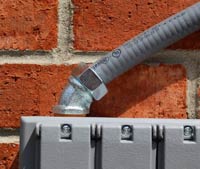
45 degree liquid tight connector
It acts to terminate an external bonding conductor, which runs parallel to the conduit.
They are fabricated from robust malleable iron.
These are assembled along with an aluminum lug and steel locknut.
The 45 degrees liquid tight connector boasts an insulated throat to safeguard against conductor abrasion.
Zinc plated guarantees added resilience.
These are available for conduit sizes from 3/8 inches to 6 inches.
Non-Metallic Liquid Tight Connectors
These types of liquid tight strain relief are UV rated for outdoor applications.
Liquid tight conduit connectors are available for conduit sizes ranging from 3/8 inches to 2 inches.
No dis-assembly s needed to install here.
All you need just need to is to push the tubing or conduit over ferrule and tighten the sealing nut
No threading of conduit is needed as well.
Just lower your installed cost.
Such a watertight conduit connector might be recycled.
You can turn the sealing nut in a counterclockwise direction to release the conduit.
Some of its features include:
- resistant to lubricants, fuels and the majority of chemicals
- non-corrosive
- non-conductive
- molded 6/6 nylon
Metallic Liquid Tight Connector
This type of liquid tight fittings can avoid pullout for:
- motion strain and;
- stress related applications
This metal conduit fittings are perfect for hazardous locations.
This is available in 45 degrees, 90 degrees, and straight liquid tight connectors
Applications include:
- machine tools
- motors
- electrical enclosures
Liquid Tight Swivel Connectors
In case you didn’t know yet:
This is the combination of 90 degrees swivel and straight swivel liquid tight flexible conduit connector.
It features a screw-on rubber PVC O-ring.
Such liquid tight connectors could be utilized along with a liquid tight conduit.
The best part about this 2-inch liquid tight conduit is that you can simply utilize one connector for all angles.
Isn’t that amazing?
Chapter 3: Liquid Tight Connector Parts
In this chapter, we will categorize the different components of a liquid tight connector and their corresponding functions.
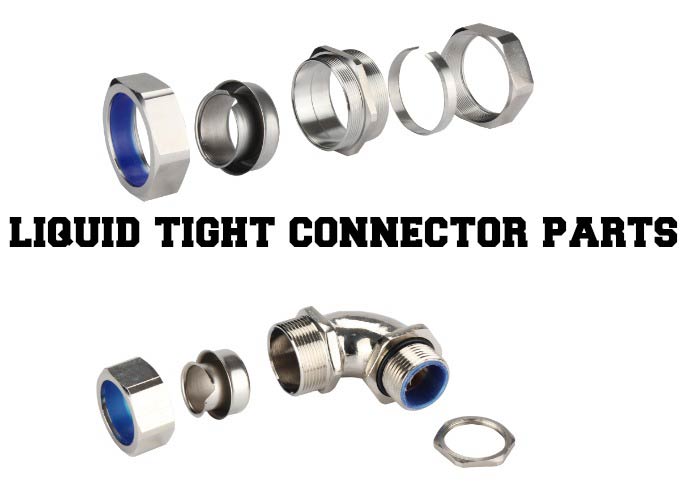
Sealing Nut
A sealing nut for the seal tight electrical fittings is considered an inert molded elastomeric ring.
It might be reinforced internally along with an aluminum disc to remove over-compression that might take place in “O” rubber rings.
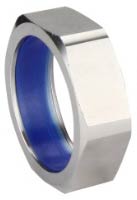
Seal
A seal is utilized to combine two parts of an engine, machine or other mechanical assemblies.
It fills the space among both parts, making a seal and filled space in the idle.
That seal stops fluid, vapor and particle leakage to safeguard and keep pressure while keeping debris out.
It also guarantees proper safety and function.
Seals are utilized in different fields and industries such as:
- general engineering
- aerospace
- automotive
This is typically made of rubber.
It is position inside the body of the liquid tight connector to serve as a seal.
You see, the seal offers safe and secure coverage for the entry point of the cord and the cable.
Body
The body of the liquid tight connector has a ferrule that spreads outside the collar.
An annular ring is molded central on the ferrule.
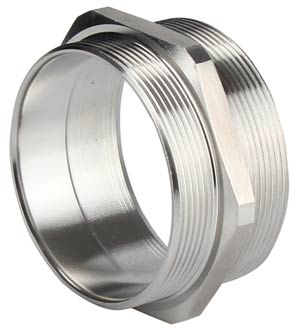
When a non-metallic conduit is strapped into it, there’s no restraint except for the meddling fit of the annular ring.
The main body is shorter.
Thus, liquid established in the body can’t find its way to the housing.
There’s no communication between the conduit when attached to the outside of the passage and the ferrule.
Lock Nut
A locknut at the close part of the liquid tight connector is also formed along with flats to enable wrenching.
Compression Nut
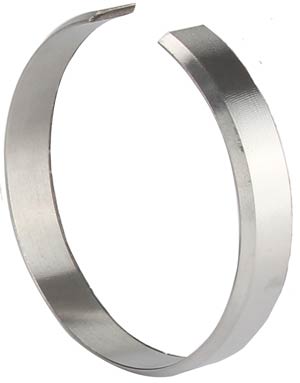
There is a compression nut that features a vaulted top as well as a conical internal surface.
Throughout the installation, the conical surface triggers the clip by concluding the fingers.
The compression nut is created to bottom on the shoulder of the body.
Therefore, stopping any over torque.
Ferrule
A ferrule in the connector was threaded and often screwed into the conduit.
Chapter 4: How to Install Liquid Tight Connector
After understanding the different parts of the liquid tight conduit fittings, what’s next?
Well, it is time for you to know the proper installation.
Fitting installation is very simple.
Take a look at the step-by-step stainless steel liquid tight fittings installation:
Step 1
Cut the conduit end square.
Step 2
You can now apply the compression nut over the conduit.
Step 3
Slip on the split gland ring.
Step 4
You must string the body ferrule end into conduit until bottomed.
Step 5
Place gland ring in contradiction of body ferrule cavity and cord the compression nut onto the body.
Step 6
Hand tightens to make sure full gripping capability.
Step 7
Break the sealing o-ring into seat given for a liquid-tight seal through some box application.
Step 8
Secure along with locknut or to threads as needed.
Conclusion
You are already aware that liquid tight flexible metal conduit connector will come in different materials:
- nylon
- brass
- nickel-plated brass
- galvanized steel
- die-cast zinc
If you are considering buying nonmetallic flexible conduit fittings, you must understand that the NEC standard doesn’t tell which material you must be utilizing.
Alternatively, it has to meet your performance criteria.
When picking your material, you must also consider the suitability and design for your particular application.
You will find conduit materials made specifically for liquid-tight performance in the:
- wastewater treatment
- food and beverage business
- petrochemical industry and;
- other industrial applications
On the other hand, some connectors are suitable for both dry and wet application.
So make sure that when you buy for a connector for wet applications, always go for liquid-tight cord connector.
After you have identified the application and elements, which play into the setting of your connector, what’s next?
It’s time for you to look for a dependable liquid tight flex conduit fittings manufacturer.
Indeed, your task isn’t finished yet.
Fortunately, you can find a trustworthy online supplier, which provides nearly everything you need.
Make sure you select a supplier who offers that one-stop-shopping experience, so you don’t need to go to other stores.
When you purchase your liquid-tight nonmetallic conduit fittings, as well as the corresponding components to complete your installation in one place, you’re likely to get a bargain from your supplier.
If you’re in search of a reputable supplier, we’ve got you covered!
We have the best and highest quality of liquid tight connectors for all your needs!





